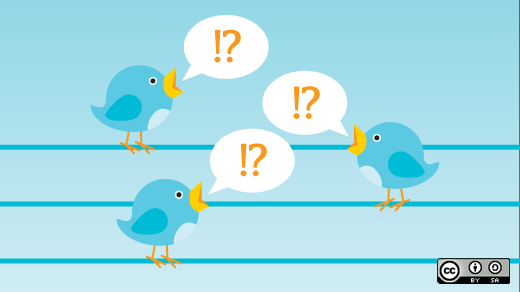Storytelling is an ancient technique that has proven to be highly effective in human communication. Through stories, we convey emotions, share experiences, and connect with others on a deeper level. On Twitter, a platform known for its character limitations, storytelling might seem like a challenge, but it's actually a powerful tool for creating meaningful connections with your audience.

Image from opensource.com
Next, I'll guide you through how you can harness the power of storytelling on Twitter to build a stronger and more authentic presence.
Every story needs a central narrative, a key message you want to convey. Before you start telling stories on Twitter, reflect on what message you want to share. It could be a value, a lesson, a personal experience, or anything you consider important to your audience.
Given the character limit on Twitter, conciseness is essential. Be creative in how you present your story. Use keywords and powerful phrases to effectively convey your message in a limited space.
Incorporate narrative elements into your tweets. You can introduce a character (which could be yourself), establish a conflict or challenge, and show resolution or a lesson. These elements help structure your story and keep your followers engaged.
Emotions are at the heart of any good story. Make your followers feel something when they read your story. You can evoke empathy, happiness, sadness, or even humor. Emotions make the story memorable.
Authentic details make your story believable and relatable. If you're sharing a personal experience, add specific details that make the story vivid. This allows your audience to immerse themselves in the narrative.
Maintain consistency with your theme or niche. While storytelling is a versatile tool, your stories should be relevant to your audience and your overall content on Twitter.
Once you start sharing stories on Twitter, pay attention to feedback from your followers. How do they react? What questions do they have? Engage with them, respond to their comments and questions, and use their feedback to refine your storytelling sk
While storytelling is effective, don't overload your feed with stories. Find a balance between stories and other types of content you share on Twitter. Variety is key to keeping your audience's interest.
To inspire you, here are some examples of how brands and individual users have used storytelling on Twitter:
In summary, storytelling on Twitter is a powerful tool for building authentic connections with your audience and standing out on the platform. By finding your central narrative, being concise, using narrative elements, and appealing to emotions, you can create stories that resonate with your followers and make them feel a deeper connection with you and your content. Start telling your stories on Twitter and watch as your presence on the platform strengthens!